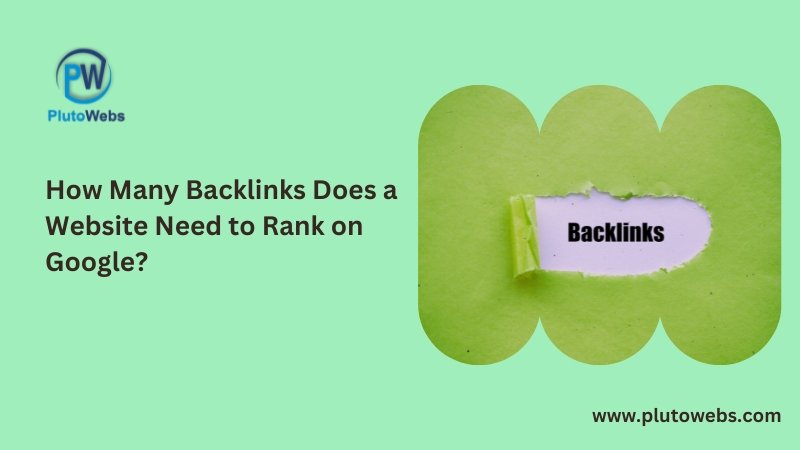Why Choose PHP Laravel for Your E-Commerce Platform?

When considering e-commerce development, it’s important to select a technology that aligns with your business needs, provides flexibility, and ensures long-term scalability. Below is a detailed comparison of PHP Laravel with popular CMS tools like Shopify, Magento, and WordPress, highlighting the advantages of Laravel for your e-commerce platform.
How to Change Godaddy Domain DNS to Point to Your Own Hosting

GoDaddy offers a comprehensive suite of services providing both domain registration and hosting services. However, circumstances may arise where hosting a website on a different server becomes a necessity, driven by specific requirements or configurations. In this article we will explain you the step-by-step process of redirecting your domain’s DNS to an alternate server. Prerequisites: · GoDaddy account with a registered domain. · Access to a hosting server with its corresponding public IP address. Step 1: Accessing Domain DNS Settings: Login to your godaddy account and navigate to domain DNS setting- Step 2: Selecting DNS Settings for the Domain Step 3: Viewing the DNS Records Step 4: Editing DNS Records Step 5: Updating IP Address Note: It is important to acknowledge that the propagation of DNS records may take anywhere from 24 to 48 hours. During this time, the DNS records will gradually start pointing to the new server IP address. You can monitor the progress using tools such as https://www.whatsmydns.net/ by entering your domain name. Conclusion: Once the domain DNS successfully propagates to the new server IP address, you gain the ability to manage your website hosting from the new hosting panel. This ensures a smooth transition and enables you to host your website with the desired configuration.
How to Change Your cPanel / Roundcube Email Password

In this article we will show you how you can change you cPanel Email password with very simple steps.
Govt of India Has Banned 13 Dark Patterns for Online E-Commerce Platforms

Learn about the Govt E-Commerce guidelines targeting ‘dark patterns’ and deceptive tactics, ensuring fair, transparent online experiences for consumers, businesses, and regulators. Discover how these regulations redefine ethical commerce practices in the digital landscape.
Myths Regarding the Creation of Custom Website Development

Your business needs a top-notch website that performs well. You might need to work with a web development company to do this. But how can you be certain that the demands you make and the terms you negotiate will be exactly what you want and, more significantly, what you actually get? So, an excellent place to start would be to educate yourself on the most prevalent myths surrounding web development. Quality web development is a multi-step, intricate process. Every modern business needs a well-designed website since it guarantees excellent functioning, easy navigation, and a strong online presence for your brand. As a result, there are many misconceptions about what you need and don’t need while looking for a freelancer or an agency to build your website. Others can cost you a lot of time, money, and occasionally even clients, while some of these are rather harmless. In order to help you meet the needs of your business website, we’ll discuss some frequent misconceptions about web creation in this post. You can Affordably Purchase a Good Website In other words, quality and price go hand in hand since you get what you pay for. A website is essential for any effective business plan, regardless of whether you are the proud owner of a small to medium enterprise (SME) or you want to build your own brand. Today, there are generally three options for building a website: hiring a freelancer, working with a web development company, or taking on the task yourself. The one you choose will rely on your business needs, goals, and budget because all three require different resources and costs. For instance, even if it might not be the most economical alternative, employing a web development business to manage your project would be preferable if you are an SME with advanced website needs. Of course, it may be simple to locate a freelancer who can build a site for you for half the cost or less, but the caliber of the finished product is probably going to let you down. A clean, responsive design with well-organized information that loads quickly and is simple to access on any device will be delivered by skilled developers and designers. This will not only create a fantastic user experience to assist visitors to get to know your company better, but it will also enable you to highlight the distinctive solutions you provide. After the website goes live, no changes are necessary. Factual statement: Building a website is only half the battle; ongoing optimization is required to keep it running well. Your website’s launch is just the beginning. Many individuals believe that creating a website is a one-time endeavour. In actuality, though, it’s a process that requires constant updates and refinement. Your website serves as a digital reflection of your company, therefore it only makes sense that it expands along with your business. A website is made up of several different parts, and each one needs ongoing attention and upkeep. You should frequently go back to the following fundamental building blocks: Web Hosting Content Management System (CMS) Domain Name Quality Assurance High-Quality Content On-Page SEO Privacy and Security Terms The digital environment is always evolving. Daily new trends and technologies arise, therefore you must devote the time and money necessary to update your website as needed to keep it current. Once your website is up, it’s critical to regularly check its analytics and make sure any necessary reworks are carried out without delay. If done correctly, this will not only enhance user experience but also guarantee your pages’ placement in search results. You’ll have a better chance of engaging and retaining your target audience as a consequence. A Stylish Design Is Required Design is important, but it won’t go nearly far enough if the user experience isn’t enjoyable. Any website that offers a top-notch user experience must do so, and the design is crucial to this. Users are visual beings that evaluate websites based on their front page. Your website’s aesthetics have a direct impact on your conversion rates. So, leaving a good first impression is crucial. A well-designed website is uncluttered, sparse, and simple to look at. Its user-friendly layouts, pertinent content, and straightforward navigation may effectively satisfy the expectations of your audience. Conducting UX research is crucial if you want to fully comprehend what users want from your website. This will make it easier for you to understand how users interact with your sites and how to properly engage them. Additionally, while dealing with site designers and developers, take their suggestions into account even if they conflict with your own. The skilled experts can provide you with useful insight into how to improve things and can help you see and take into account aspects you might not have previously considered. Developing a high-quality website requires a large team. Fact: Skill and knowledge are more important than the number of individuals. There are many phases and a lot of work involved in web development. Having a large team is frequently necessary, and the size of the team can change based on the user requirements for your website and your budget. The following experts are essential to building a strong foundation for your website: Project Architect/Owner Project Manager UX/UI Designers Marketing and Content Specialist QA and Testing Specialists Front- and Back-End Developers You can be sure to get a website that can live up to your expectations and is worth the price by working with a web development business you can rely on at each stage of the process. Your Saviour is ready-made Website Templates or Themes. Although it is technically possible, this is not a recommended method. Anyone who wants to develop a website but has limited money, experience, or both should consider using templates, including bloggers, small enterprises, start-ups, and small-scale entrepreneurs. With pre-built solutions, all you have to do is create your copy and design an appealing, user-friendly website. But pre-made themes and layouts won’t give your site a distinctive
API Security Best Practices To Safeguard Sensitive Data

The use of APIs (Application Programming Interfaces) is now commonplace because more people are using various technological solutions. As a result, API security is a bigger problem than ever in creating apps. SaaS businesses typically have 350 integrations, compared to significant SaaS businesses like Slack, Zoom, and Shopify, which have over 2,000 connectors. Application Programming Interfaces (API) make life simpler, which is fantastic for developers and end users. However, there is a persistent worry about API security, particularly for open APIs that demand third-party logins. The pressure on developers to complete their work under arbitrary time constraints raises questions about quality standards. So how can businesses use the API ecosystem while ensuring that their data is protected from hackers? How? By utilising API security best practices. The top four security best practices will be discussed in this post as a way of protecting your APIs against malicious assaults. Describe API security API security is the process of defending APIs from risks and assaults. Today, every company and website has hundreds, if not thousands, of integrated APIs, many of which hold private or sensitive data, making it essential. The following procedures are put in place for effective API security protections; The queries that the API processes come from legitimate, reputable sources. All of the requests that are being handled are valid. Neither the answers nor any of the encryption can be broken. Your API implementations will probably use either SOAP (Simple Object Access Protocol) or REST (Representational State Transfer), two widely used web service access protocols, depending on your company and the type of data involved. Because SOAP is standardised, it doesn’t require HTTP and contains built-in error handling. REST is quicker, easier to learn, and doesn’t need expensive equipment. But by design, SOAP APIs are also more secure. To learn more about these two communication protocols, see this SOAP vs. REST comparison article. API Cyberattacks and their Types Because they typically include documentation about their structure and creation, APIs are vulnerable to attacks. In their efforts to acquire confidential data, hackers can use this to reverse engineer APIs. The most frequent assault types are listed below. The DDoS Attacks Distributed Denial-of-service (DoS) attacks are the most common kind. The attack is carried out on an API by overwhelming its memory through thousands of attacks, which result in the API slowing down and ultimately crashing the web server. Another way this happens is hackers send a vast amount of information in each request instead of thousands of requests. Stolen Authentication The quickest approach to gain access to user data might be through compromised authentication. Hackers gain access to the API by stealing a legitimate identity. The authentication token is typically taken and then used improperly. Cybercriminals will also get around poor authentication if the token isn’t used to obtain access. Man-in-the-Middle Attack A man-in-the-middle (MITM) attack takes place when a hacker is able to eavesdrop on the communication between the end user and the API. When neither one-way nor end-to-end encryption is in use, this typically occurs. Private data, such as login credentials, may frequently be taken as a result of these aggressive attacks. Best Practices of API Security After discussing the significance of API security and the kinds of cyberattacks to anticipate, let’s discuss some of the best practices for API security to safeguard your users. Use strong user authentication Lack of or subpar authentication is the main reason for API security breaches. Authentication provides evidence that someone is who they claim to be, much like having a company explain its LLC founding purpose precisely to demonstrate its authenticity. Your APIs must be secured because they are the gateway to a company’s database. Utilizing one-way, strong user authentication lowers the security risk associated with lost user authentications. Multi-factor authentication or, even better, a trusted authorisation method like OAuth is the best way to achieve strong user authentication. Either approach restricts access to online services to only authorised users. Encrypt Every Bit of Data, whether Online and Offline To defend against numerous assaults, the most frequent of which being MITM attacks, it is imperative to encrypt data. These occur when criminals gain access to private data, including login passwords, credit card numbers, account information, and other personal data, as previously mentioned. To prevent theft, data transmissions between API servers must always be properly secured. Statistics show that 33% of all Americans have experienced identity theft, with credit card fraud being the most frequent type. The Transport Layer Security (TLS) protocol, an improved version of the Secure Sockets Layer (SSL) protocol, should be used to encrypt all communications between businesses. While one-way encryption is an option, two-way encryption is significantly more effective and secure. Consider WhatsApp. The application ensures that every chat is end-to-end encrypted, demonstrating its high level of security. With this level of security, people will find WhatsApp appealing. Data encryption is therefore crucial, but it’s always good to have extra security. Utilizing credit protection services is another means of preventing ID theft. Services for credit protection assist you in keeping an eye on your financial activity and making sure no fraud takes place. These services will aid in repairing your credit score if it has been negatively impacted. Additionally, adding API Throttling and Rate Limiting can assist alleviate this issue. Hackers are very interested in APIs since they include a tonne of private data. Sadly, this also leaves APIs open to DDoS assaults. A good place to start in preventing successful API attacks is by putting rate limits in place. Decide at what point all requests will be declined. 8,000 requests per account per day, as an illustration. Use throttling in addition to threshold restrictions. Throttling algorithms carry out additional safety measures and verify the validity of APR requests. Additionally, consumers will still have access to the API and you’ll prevent breaches even though throttling would make a user’s connection slower, which is frustrating. With both in place, there is less likelihood that firm data will be compromised
How To Optimize The Largest Contentful Paint & Rank Higher In Google

Are you curious about what Largest Contentful Paint signifies and how it may impact the effectiveness of your UX and SEO? Go on reading! You’ll learn what LCP is, how to test it, and how its grade is affected by certain situations. Additionally, you’ll discover how to improve WordPress performance and repair a poor LCP score on desktop and mobile (Largest Contentful Paint longer than 2.5 or 4 s). Simply put everything is in English! Definition of the Largest Contentful Paint (LCP) and Why it Matters? The time it takes for the most significant element to become visible in the viewport is measured by the Largest Contentful Paint (LCP), a Core Web Vital statistic. You won’t see practically anything on the page until the LCP loads. The LCP element is always above the fold, or at the top of the page, which is why. LCP is typically a text or graphic block. But it may also be a cartoon or a video. The LCP component can vary between desktop and mobile platforms. The biggest aspect, as you would have guessed, is the one that matters the most for perceived load speed and user experience. Consider this: you won’t have a nice user experience if the page’s main component takes a long time to load. While you waited for the website to load, you would see an almost blank page. Even leaving the website is possible! A few more seconds might go a long way when you’re browsing. Because of this, Google has added LCP to the Core Web Vitals metrics, which gauge how excellent your user experience is. LCP went live recently in June as a component of the Page Experience Signal, a new ranking factor. Because of this, Largest Contentful Paint is important for giving a fantastic user experience as well as for enhancing your SEO performance. LCP also contributes 25% of the overall PageSpeed Insights score. Your page speed grade will probably increase if you increase its performance. LCP is currently one of the most significant performance metrics, to put it briefly. The Ideal LCP Score LCP should be less than or equal to 2.5 seconds to achieve a high score. The page will receive a green score and pass the test if this is the case. The score “needs improvements” if LCP is between 2.5 and 4.0 s; you’ll receive an orange grade. Let’s say that the LCP is longer than 4 seconds. If the score is “poor,” you should make the necessary corrections as soon as you can. Now let’s look at How we may Locate the LCP Component. The LCP element can be located and measured in a variety of ways using both lab and field data. The most popular equipment for LCP testing is listed below. Lab Data tools: Lighthouse PageSpeed Insights Chrome DevTools WebPageTest GTmetrix Field Data tools: PageSpeed Insights (if available) Chrome User Experience Report (Field Data) Search Console – Core Web Vitals report (Field Data) In our article on PageSpeed Insights, we go into greater detail on the distinction between Lab and Field Data. Let’s discuss PageSpeed Insights and Search Console, two of the simplest and most useful tools. Using PageSpeed Insights to Assess and Identify LCP The simplest method for measuring and locating the LCP element is PageSpeed Insights. You will receive the LCP grade in the Lab Data and the Field Data after evaluating the URL’s website (if available). Additionally, you’ll receive PageSpeed advice to help you perform better. Locate the “Largest Contentful Paint element” section under Diagnostics. The LCP element for the page you’re evaluating will become clear to you. In order to make things clearer, let’s go over a few examples. The Mobile LCP Example We use the tool to test the page’s functionality, then we navigate to the Diagnostics section. The H1, or title of the blog post, is the LCP element. An outstanding user experience will be provided by the page as long as the primary headline loads quickly. Example of LCP from Desktop Once more, we visit the Diagnostics Area and search for the LCP component. Unsurprisingly, LCP differs from mobile LCP. The LCP for desktops is quite different: As a page-based tool, PageSpeed Insights, we advise you to do many tests for various pages. You should also use the Search Console for a comprehensive analysis. Finding LCP and Measuring It on Search Console The Core Web Vitals report in Search Console allows you to evaluate the performance of your entire website and identify any problems. Both performances will be accessible on PC and mobile: When you access the report, you can see how each criteria is being met by the pages on your site: good, requires improvement, and poor. Each Core Web Vital performance is grouped in the Search Console report according to status, issue kind, and URLs. You might, for instance, have some URLs that aren’t working properly for LCP. If so, you may see “LCP issue: longer than 2.5 s (mobile)” in the report. You can access the list of URLs that need to be corrected by clicking the entry that corresponds to that particular problem. While these URLs are merely examples, they can nonetheless help you understand what is happening. Finding the URL pattern and continuing with the patching and validation will be rather simple. What Affects LCP and Results in a Slow Score Delayed server response times, render-blocking JavaScript and CSS, and slow resource load times are three variables that have an impact on LCP for WordPress sites. Slow Response Times from Servers The server receives a request from the browser, but it takes too long for it to provide the desired material. It takes some time for things to be rendered on your screen since the content isn’t delivered to the browser quickly enough. The outcome is a poor load time. It has an impact on the LCP score. By lowering your Time to First Byte, utilising a CDN, and establishing third-party connections early,
Tips & Best Practices for Monitoring the Performance & Health of Websites

Any company that wishes to thrive in a highly competitive climate needs a website. Many individuals are under the impression that websites are solely necessary for e-commerce projects, however this is untrue. Virtually every effort should have its own webpage, and every firm needs website performance monitoring. However, the focus of this article is not on the necessity of websites but on how to monitor and manage their performance. People prefer to avoid Error 404 or having to wait an eternity for a website to load. This is the quickest approach to provide the upper hand to rivals. How can you make sure your website is operational? Just follow good monitoring techniques. Let’s begin with the fundamentals. What is monitoring website performance, and why is it important? Website monitoring is a thorough assessment of responsiveness and performance designed to reduce fault time, accelerate page load times, and guarantee the greatest user experience. For most firms, ignoring website performance is a serious problem. The biggest online retailer in history, Amazon, had a 40-minute website meltdown in 2013. The company lost sales of $4.72 million as a result of the downtime. More subsequently, it was projected that the Facebook crash in October 2021 cost $100 million! This demonstrates once more the clear link between financial success and website performance as well as the risks associated with maintaining business websites. The corporate website functions as an online version of the business card. Online research regarding a certain brand or solution is typically where people start. As a result, one of the elements that contribute to the first impression of the business as a whole is the speed at which page loads. In conclusion, website monitoring resolves a wide range of problems, from service quality control to web server capacity planning, and enables the detection of errors before users become aware of them. What needs to be observed for site optimization? The general strategy for site optimization is as follows: it’s critical to keep an eye on the load on the system, the load on the web service components, the network availability of the server, and the hardware health factors. Additionally, it is essential to gather precise, individual data that support identifying and comprehending the root causes of problematic site behaviour and the planning of server resource development. Let’s look at the things you should check and the things you should do. What to check? Examine the website’s response time. A web server running virtual hosts Web services for SOAP All-around server health What to do? Measure web server performance using SNMP and WMI. Compile data on HTTP errors Examine web server notifications and logs Utilize Syslog and Windows Event Log to analyse server issues. Consolidation of a failover cluster’s or load balancer’s server status Keep an eye on the databases and servers that support your web servers. Keep track of the server KPIs for CPU, RAM, bandwidth, and other factors. Compile downtime information on an hourly, daily, weekly, monthly, and annual basis. Application Performance Monitoring (APM) solutions may be used to monitor the majority of these characteristics, which can give businesses a better understanding of the functionality and performance of websites and web apps. For instance, Retrace APM offers deep integration and functions like a library that is installed in a codebase. The technology also enables you to check that web apps are performing as intended and that service levels are being met. The APM tool swiftly identifies and resolves issues before they become user complaints. How often should you evaluate the Effectiveness of your Website? Performance testing should not only be done once a year. The setup of your web server, changes to the code, the volume of traffic you receive, the content of your website, and other factors can all affect how well your site performs at any one time. At the absolute least, businesses need to establish the habit of monthly monitoring. You may better prepare for traffic peaks and lulls and prevent financial losses by testing frequently and seeing patterns and trends over time. That’s All? Although it necessitates a substantial time and money commitment, improving technical performance enables firms to accomplish desired outcomes. However, maintaining a server or optimising web pages is insufficient to guarantee a secure competitive position. There are several low-cost procedures that improve website appeal, and internal and external website optimization cannot be overlooked. You must first perform technical optimization, which implies: Examining the robots.txt file for accuracy: this file is in charge of indexing the website and removing duplicate pages. Htaccess validation: This file is in charge of rerouting users from inactive pages to those that are required. Code updates: this denotes the elimination of extra tags that lengthen the code. The search engine should delete the page from the index if it doesn’t exist on the website, therefore check the 404 error settings. The second thing you need to do is figure out external site optimization, which includes structuring internal page linking, optimising the content on landing pages, and using meta tags. Additionally, external site optimization entails a content marketing plan, which includes posting engaging, new, and helpful information for visitors, professionally edited online video tutorials, link exchanges with other top-notch resources, and more. All of these are requirements for effective and usable modern web design, which is becoming more difficult every year. Businesses that don’t want users to describe their websites as routine or uninteresting can choose to implement these guidelines. Final Wrap Up A successful website constantly provides the finest user experience to its visitors. Delivering spectacular content, excellent designs, and outstanding performance involves diversifying. If you eliminate even one of these components, your client experience will inevitably fail. More than concentrating solely on load times is required when it comes to performance testing. Apply other test kinds instead to obtain a more accurate image. And develop the practice of performing them frequently. Additionally, use Retrace to find more QA issues and take advantage of a website that offers superior
How to Create a Website for Lead Generation for Your Business

It makes sense to optimise your website to create leads. But sadly, you can’t just put a “Click Here” button on your home page and wait for the leads to start coming in. Instead, strategists need to be used by marketers and designers. In this article, we’ll go over a few short strategies for lead generation website optimization. We must first develop a fundamental grasp of the lead generation process before we can comprehend how to optimise our website. What factors come into play when a website visitor converts to a lead? When a website visitor clicks on a call-to-action (CTA) present on one of your site pages or blog articles, the lead generation process normally gets started. This CTA directs users to a landing page with a form that asks for their contact information. The visitor is directed to a thank-you page after completing and submitting the form. After reviewing the fundamentals of lead creation, we may move on to the specifics. How to Make Your Website Lead Generation Ready Let’s explore some straightforward techniques for lead generation website optimization. 1. Increase the number of forms on the most popular pages. Before you start, it’s crucial to analyse your existing lead-generating performance so you can monitor your progress and identify the areas that most require improvement. You may not even be aware of the fact that some of your pages could be outstanding lead generators. Start by doing an audit of your lead generators, which are the sources of the majority of your online traffic and marketing. Here are some typical locations where a business may receive visitors: Email marketing: Users that visit your website through one of your emails may drive traffic to it. Social media: Users that participate in a campaign through one of your social media profiles may drive traffic. Live chat: Users who utilise your website’s live chat feature to contact your customer care staff may bring you traffic. Blog Entries: Your best-performing blog posts may bring in traffic. Make sure the landing pages your leads are landing on are doing all possible to pique a visitor’s interest once you’ve determined where your leads are coming from. For instance, updating the pages they are viewing with information that keeps them on and engaging with your website is the next step if, through your analytics tool, you discover that the majority of your potential leads are clicking on inbound links to your website from your Facebook page. Include longer-form content that visitors can access through forms that request their contact information on your most popular website pages. 2. Make each stage of the lead creation process more effective You better not link to a snow-clearing consultation from a blog post about “10 Ways To Improve Your Lawn Care Regimen” if your visitor arrived there after searching for “lawn care tips” on your website. Make sure your offers are pertinent to the page they are on in order to capitalise on website users’ enthusiasm for a certain topic. You can start gaining knowledge about a visitor’s conversion route as soon as they arrive on your website. This process begins when a visitor comes to your website and hopefully concludes with them submitting a form and turning it into a lead. But occasionally a visitor’s journey doesn’t lead to the intended destination. You can improve the conversion path in those circumstances. The three essential components of the lead generation process should be tested if you want to conduct an A/B test on a landing page: The Calls to Action (CTAs) Use colours from your website that are in contrast. Keep it straightforward and use a platform like Canva to quickly, effortlessly, and cost-free generate images. For examples of different calls-to-action (CTAs), you can test on your blog, read this blog post. The Landing Pages Companies with 30+ landing pages on their website produced 7X more leads than those with 1 to 5 landing pages, according to a HubSpot survey. Thank-You Pages In the lead generation process, landing pages frequently receive all the attention. But you shouldn’t ignore the thank-you page, which a visitor is directed to after submitting a form on the landing page and becoming a lead. On your thank-you page, be sure to express gratitude and include a link so that your new lead can really download the offer. Social media sharing buttons and even a form for a different, related offer are also options. Email With The Kickback You have the option to send a kickback email, sometimes known as a “thank-you” email, to a visitor who converts into a lead and whose information is added to your database. The engagement rates (opens and click-throughs) of kickback emails were twice as high as those of regular marketing emails. Utilise kickback emails as a chance to include a very precise CTA and promote sharing on social media and email. 3. Begin with a straightforward CTA on your homepage. The CTA is what retains a person’s attention if the design of your webpage is what draws them in. Don’t constantly invite visitors to view your most extensive or intricate stuff, nevertheless. Your site should provide a free trial or a subscription to a recurring campaign, like a newsletter since it is at the top of the marketing funnel. Think about putting one of the following CTAs on your website’s home page: “Subscribe to Updates” Consumers expect their browsing to be as non-intrusive as their shopping, generally speaking. They frequently aren’t prepared to buy when they first visit your website. By inviting them to sign up for an email that tells them about business trends and product updates, you may introduce yourself to them without any effort or commitment on their behalf. Follow up personally with those who choose to remain on this email list to determine their level of interest and ultimately convert them to marketing-qualified leads (MQLs). “Try Us for Free” The lifeblood of a developing business is free trials and demos. They enable
How Many Backlinks Does a Website Need to Rank on Google?

How many backlinks do I need to rank this website in Google is a common query that we receive. Most website owners know that backlinks are among Google’s most significant ranking factors. The problem is that creating backlinks takes a lot of time, money, and effort. So how do you determine how many backlinks to create? I’ll walk you through the three-step procedure for calculating how many links you’ll need to create in order to rank any page on your website for any keyword. How many Links must I Create? I wish there was a general response to this query. But in reality, there isn’t. Each and every keyword, market, and the search result is unique. It will take some time to determine how many backlinks you truly need, but happily, it’s much simpler than it sounds! Follow the steps mentioned below: Step 1: Determine which pages you need to build links to Not all pages are worthwhile for linking to. It’s unexpected, isn’t it? You should only concentrate on creating links to web pages with keywords that drive traffic and sales to your online store. Step 2: Calculate the gap in backlinks between you and your competitors Once you’ve narrowed down your list of target keywords, you may determine the “link gap.” The amount of backlinks required to land one of Google’s top three positions for a specific term is known as the link gap. In the end, here is where you want to be. Reflect on it Once you are aware of the required number of links, you can calculate: What the price will be. How much time it will take. What comes next? Create the links you require! Step 3: Begin developing your backlinks For many SEOs, link building is the most challenging aspect. Some people choose to outsource it (see approach #2), while others feel secure enough to handle it themselves (see way #1). Decide which method is ideal for you based on the demands of your own company. Method #1: Copy the top backlinks of your rivals My preferred link-building technique is backlink analysis. I always get the best results from it in the shortest length of time. The first thing you need to do is locate your main rivals in the search results. Simply conduct a fast Google search for your desired keyword to achieve this. Your main competitors are the top-ranked websites. Use Ahrefs to perform a thorough backlink analysis of the top 5 competing websites for your target term. You may determine their “best backlinks” by doing this (aka the backlinks you want to replicate). You now have all the information you require. The final step is to determine how they got the link. Is it a… Blog comment? Guest post? Forum post? You are trying to replicate whatever it was. Simply get in touch with the website and propose a guest post, for instance, if it was a guest post. Pretty basic, yes? Why this works so well is as follows: A website is more likely to link to you if it is previously linked to one of your competitors. You can obtain more links of good quality with much fewer work thanks to it. Method #2: Order the Links You Need To Rank Even with a great link-building strategy, seeing returns takes time and commitment. Due to this, a lot of business owners choose trustworthy link-building services to handle their link-building requirements. The advantage is that you can figure out how many links you’ll need to rank and then just go out and buy them. That is the easiest it gets, right? Why Is Backlink Building Important? Link building is now a crucial component of SEO. It will be difficult for you to rank for challenging keywords if you don’t build any high-quality links. Here are three compelling reasons to increase your backlink profile. You can Improve your Rankings with Backlinks Links are viewed by Google as endorsements (or votes). The more trusted websites that recommend you, the better you will rank in search results. That makes logical, no? Building links from other high authority sites is crucial. Your website receives a portion of that authority, which increases the likelihood that Google will give it a higher SERP ranking. You can Increase your Search Traffic with Backlinks What occurs when your website gains more traffic? You increase organic traffic, plain and simple. The best thing, though? This traffic has excellent targeting. You may be sure that you are receiving high-quality traffic when your website ranks for pertinent and valuable keywords. Backlinks can Help you Build More Credibility The level of authority indicates how likely you are to rank in Google. More authority equals a higher number. You must create more backlinks if you want to raise domain authority. In the SERPs, you can gain a competitive advantage in this way. When your website is an authority, it will be: harder for rivals to surpass you You may rank for more keywords more easily. You gain a benefit from link building that is difficult to lose. That is what gives it its great strength (and importance). Final Wrap Up You now have it. You now have the knowledge necessary to compute the precise number of backlinks required to rank any page for any keyword on Google. To consistently rank your high-value website pages for the relevant keywords, you simply need to follow the procedures outlined above.
